Pagos digitales
La tecnología digital está transformando la manera en que respondemos a las emergencias. Las innovaciones abarcan desde cómo identificar a las personas elegibles para recibir asistencia, hasta la recopilación de datos para evaluaciones y monitoreo, así como la comunicación con las comunidades afectadas por situaciones de crisis. Los sistemas de pago digital, incluidos los dispositivos móviles, cupones electrónicos y tarjetas (cuando se utilizan apropiadamente) pueden proporcionar asistencia más oportuna, más segura, más eficaz en relación al costo, y más inclusiva. Sin embargo, a medida que el volumen de los datos personales que recogemos, almacenamos y compartimos sobre la gente crece, debemos garantizar que nuestros sistemas de protección de datos se mantienen al día, y que comprendemos y mitigamos los riesgos inherentes a las nuevas tecnologías.
Últimos recursos
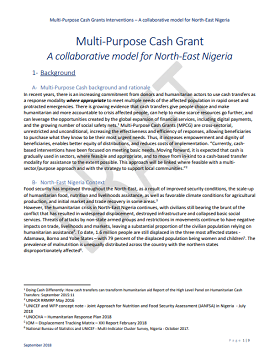
Multi-Purpose Cash Grant – A collaborative model for North-East Nigeria
Report
In recent years, there is an increasing commitment from donors and humanitarian actors to use cash transfers as a response modality where appropriate to meet multiple needs of the affected population in rapid onset and protracted emergencies. There is growing evidence that cash transfers give people...
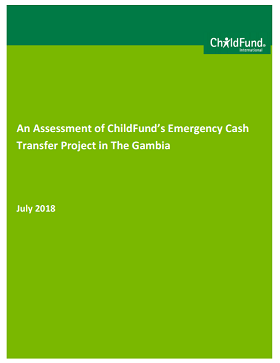
An Assessment of ChildFund’s Emergency Cash Transfer Project in The Gambia
Report
Review of ChildFund’s pilot cash transfer intervention using mobile money, assisting people displaced by political crisis. Includes description of project design, results, assessment, and recommendations for future cash-based interventions. Project participants appreciated the cash which they used to...

Addressing Customer Due Diligence Obligations to Promote Rohingya Financial Inclusion
Report
This report seeks to demonstrate that viable solutions exist for undocumented refugees, and outlines successful examples in different contexts whereby alternative KYC approaches have been established for refugees. It further demonstrates that by identifying and assessing the risks and concerns around...
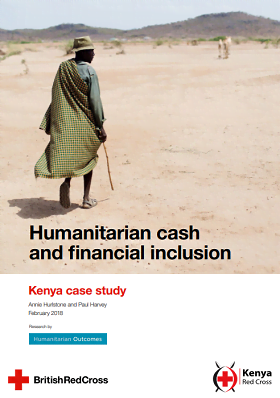
Humanitarian Cash Transfers and Financial Inclusion
Report
A case study on Kenya Red Cross Humanitarian Cash Transfers and Financial Inclusion along the Kenyan Coast. The study examines the extent to which humanitarian e-transfer beneficiaries increase their access and use of formal financial services and products such as payments, savings, credit or insurance.
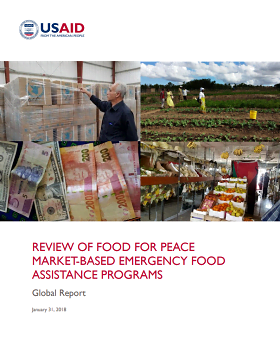
Review of Food for Peace Market-Based Emergency Food Assistance Programs Global Report
Report
Efficient and effective use of humanitarian funds is critical to meet the emergency needs of as many people as possible, especially as emergencies in developing countries have become more numerous, complex, and protracted. The United States Agency for International Development (USAID) Office of Food for...

Review of Food for Peace Market-Based Emergency Food Assistance Programs: Jordan/Turkey Case Study Report
Report
Syria regional crisis: The response to the Syria regional crisis exemplifies the challenges and opportunities involved with delivering food assistance in a widespread, largely urban refugee and internally displaced persons (IDP) crisis affecting middle-income countries. This case study focuses on...

Review of Food for Peace Market-Based Emergency Food Assistance Programs: Nigeria Case Study Report
Case Study
Nigeria is an example of food assistance in a conflict situation in the Sahelian context. The response used information technology to deliver one of the more sophisticated applications of voucher programs. This case is a good example of proactive implementing partner (IP) mechanisms and monitoring systems...

Hygiene NFI Provision through Cash Assistance with E-Voucher Modality: PDM
Report
NCA & LWF Gure-shembola Refugee Camp CBI PDM report.

Gure- Shembola Refugee camp E-vouchor pilot program- Learning Document
Report
Norwegian Church Aid (NCA) in partner with Lutheran World Federation (LWF) have been completed their project using CBI approach. The project was aimed to provide Gure Shembola refugees with access to their choice of hygiene items through an e-voucher system. This learning document aims to document the...

Digital Financial Service Ecosystems in Bidi Bidi Refugee Settlement
Report
A report about the Digital financial services ecosystem Bidibidi refugee settlement, Uganda. This document consists of a mapping of the six pillars of the DFS in Bidibidi Refugee Settlement and Host Community, with funding from UNCDF.
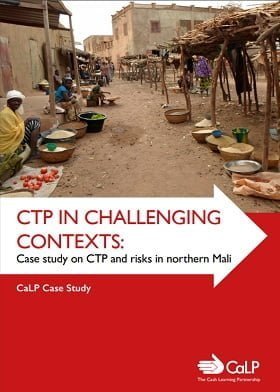
CTP in Challenging Contexts: Case study on CTP and risks in northern Mali
Report
This case study was commissioned by the the CALP Network as the first output under the 2018–2019 workstream on cash transfer programming (CTP) and associated risks. The study aims to contribute to the body of evidence on CTP-related risks and mitigation strategies by drawing lessons learnt and...

Cash Transfer Programming in Armed Conflict: The ICRC’s Experience
Report
Money is the main means of survival for most people around the world. That remains the case in situations of armed conflict, when having cash to buy essential goods can mean the difference between life and death.
The ICRC’s experience shows that cash is an essential tool in humanitarian action in armed...

Cash Week 2018: Event Report
Report
Cash Week 2018 was a series of events aimed at advancing issues, reflecting, and preparing for the future of cash and voucher assistance. The events, which took place in London and online from 15-19 October 2018, were intended to provide opportunities for: Networking and collaboration between the CALP...

E-Transfer implementation guide
Guidelines and Tools
This updated E-transfer Implementation Guide replaces the original guide published in 2014. In cash transfer programming (CTP), electronic transfers (e-transfers) are a digital replacement for paper vouchers or physical cash. E-transfers are a disbursement mechanism – a way of transferring money, goods...

Harnessing Digital Technology for Cash Transfer Programming in the Ebola Response. Lessons Learned from USAID/Office of Food for Peace Partners’ West Africa Ebola Responses (2015–2016)
Report
Globally, the adoption of digital technology has grown alongside the increase in cash transfer programming (CTP), often through the use of e-transfers, in part because of the potential gains in accountability, efficiency (cost and time) and effectiveness. The 2015 High Level Panel on Cash Transfers...

How We Built a Global Action Agenda to Enable Digital Payments in Humanitarian Response
Blog Post
In recent years, digital payments have emerged as an essential, high-impact tool for humanitarian response. They can enable humanitarian responders to quickly reach people with assistance, and in ways that provide both short- and long-term benefits to those in need, such as access to safe and portable...
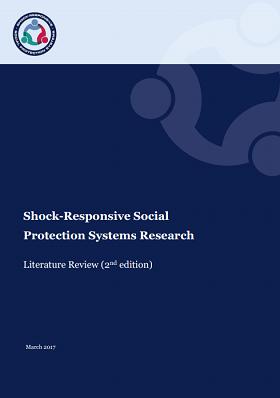
Shock-Responsive Social Protection Systems Research: Literature Review (2nd Edition)
Report
DFID has commissioned research into Shock-Responsive Social Protection systems, to further understand the nature of the interaction between social protection, humanitarian and disaster risk management systems and ways in which long-term social protection systems can be scaled up to provide support in...
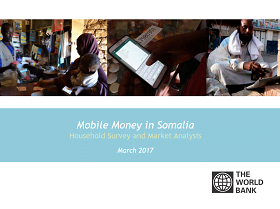
Mobile Money in Somalia – Household Survey and Market Analysis
Report
Key findings from an assessment of mobile money in Somalia. Provides information about mobile money penetration; practicalities; usage; perceptions and the use of shillings versus dollars.

ELAN Humanitarian KYC Case Studies
Report
Know Your Customer (KYC) regulations, also known as customer due diligence, are designed to combat money laundering, terrorist financing, and other related threats to the financial system. They refer to the ID checks that financial institutions perform to comply with national financial regulations....

Can E-Transfers Promote Financial Inclusion in Emergencies: A Case Study from Ethiopia
Report
The Electronic Cash Transfer Learning Action Network (ELAN) launched this research to build an evidence base around connecting emergency electronic transfer (e-transfer) recipients with additional financial
services. They also wanted to learn if, when, and how e-transfers can promote sustained uptake and...


